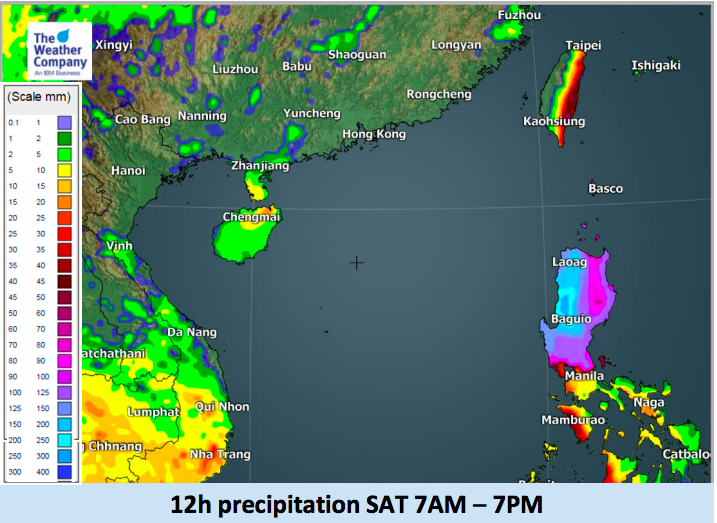Mangkhut blasting the Philippines from above, now affecting Taiwan too. Hong Kong, China next.
14/09/2018 8:36pm

> From the WeatherWatch archives
+6 Maps —- Super Typhoon Mangkhut is currently located over Luzon island in the northern Philippines. Shortly before landfall Mangkhut’s air pressure was an astonishingly low 905 hPa in minimum surface pressure. Winds were sustained at 200km/h with gusts to 270km/h (JTWC), remaining almost unchanged from two days ago.
Mangkhut made landfall shortly before dawn NZT in the northernmost part of Luzon island (just after Friday midnight local time) with nearly Super Typhoon intensity. It will cross the island today.
Destructive wind gusts, storm surges, extremely heavy rain leading to major flooding and land slides will definitely occur.
The heaviest rainfall will occur in the western side of the Cordillera mountain range, including the city of Baguio. Over 50 mm/h rainfall rate and at least 300mm accumulation for 24h is likely across wide areas in northern Luzon island during Saturday daytime and night.
Heavy rain accumulation is expected also in eastern Taiwan from Saturday afternoon to Sunday morning (local times) due to easterly winds blocked by the island’s mountains/ranges.
After Saturday, Mangkhut will keep moving west-northwestward in the South China sea to reach the southern coast of Guangxi province, China on Monday. It will develop again in the South China sea after being decayed due to interaction with mountainous landmass of Luzon island, and reach sustained intensity as strong as 215km/h again before the next landfall.
Heavy rainfall and destructive winds is expected in Guangdong and Guangxi province, Hainan island, Hong Kong, and East Taiwan in the beginning of next week. As the forecast track has been shifted northward, the impact on Hong Kong will be expected severer than the previous forecast.






– WeatherWatch.co.nz – With thanks to our official partners at The Weather Company/IBM for the detailed eastern Asia information.
Comments
Before you add a new comment, take note this story was published on 14 Sep 2018.





Add new comment